What is Pattern Drenching in Interior Design?
Pattern drenching in interior design is an emerging trend that involves saturating a space with a repeated pattern across various surfaces—walls, ceilings, furniture, and even textiles. Much like its cousin, color drenching, this technique seeks to unify the entire room with a single visual language. However, instead of a monochrome palette, pattern drenching uses repeated motifs to create a bold and immersive experience. This unique styling approach is rapidly becoming a statement technique in modern homes and luxury interiors alike, signaling a shift towards more expressive and personalized environments.
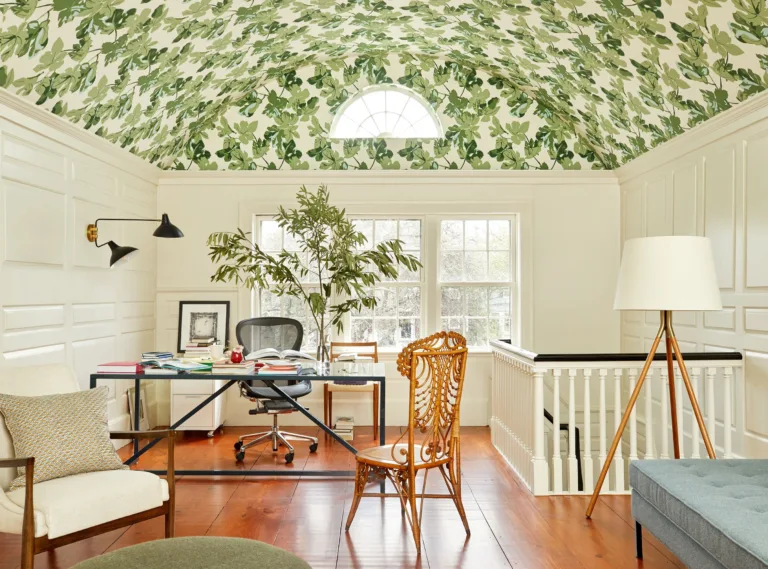
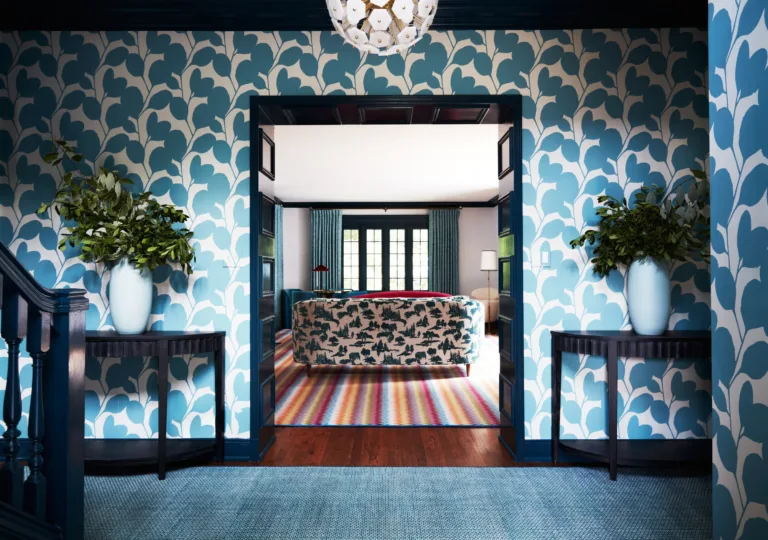
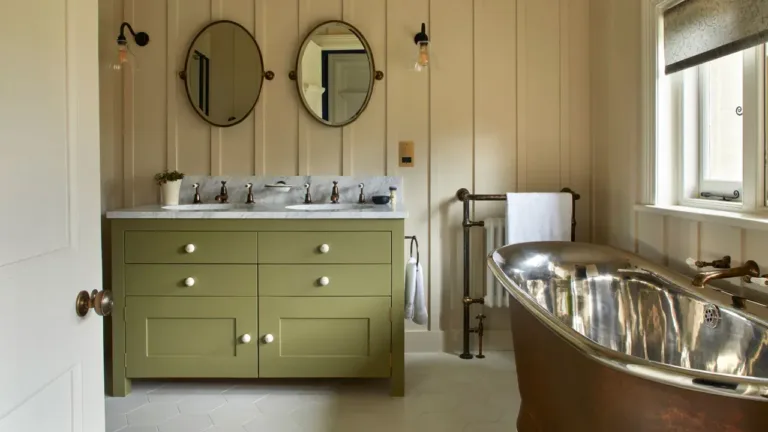
Introduction to Pattern Drenching
A Bold New Design Trend
In recent years, interior design has leaned heavily into personalization, with homeowners and designers seeking new ways to reflect individual tastes. Pattern drenching is a response to this evolution—an aesthetic that embraces pattern repetition and visual drama. While minimalism ruled the past decade, the pattern drenching trend of 2025 is all about maximalist design techniques, pattern layering, and self-expression.
Why Pattern Drenching is Gaining Popularity
The appeal of pattern drenching lies in its ability to transform a space from bland to bold. With the right design choices, this trend adds depth, energy, and personality. Influenced by both vintage prints and modern design software, this technique is gaining traction among designers who want to experiment with wall-to-wall pattern décor and daring, cohesive interiors.
Understanding the Concept
What Does "Pattern Drenching" Mean?
Pattern drenching means applying the same pattern or a similar motif across multiple surfaces within a room. This can include:
- Covering walls and ceilings in the same wallpaper
- Matching upholstered furniture and window treatments
- Using the same pattern in rugs, cushions, and art prints The result is a unified visual theme that creates an immersive and artistic feel.
Difference Between Pattern Drenching and Color Drenching
While color drenching focuses on using a single hue in different tones and finishes across a space, pattern vs color drenching differs in the use of motifs instead of just shades. Color drenching aims for depth through uniform color; pattern drenching aims for movement, texture, and rhythm.
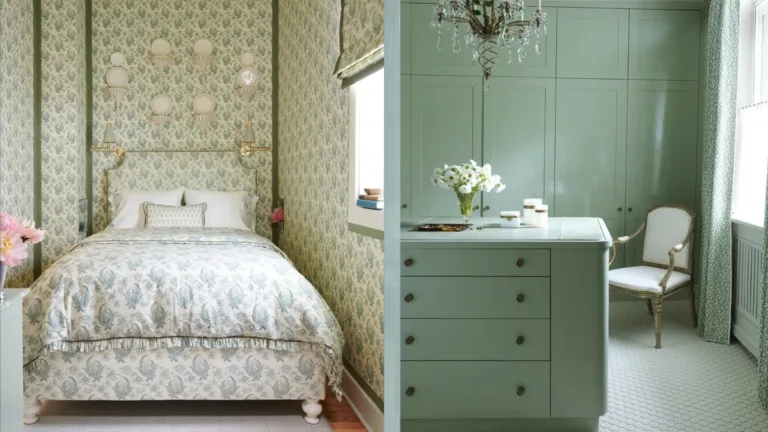
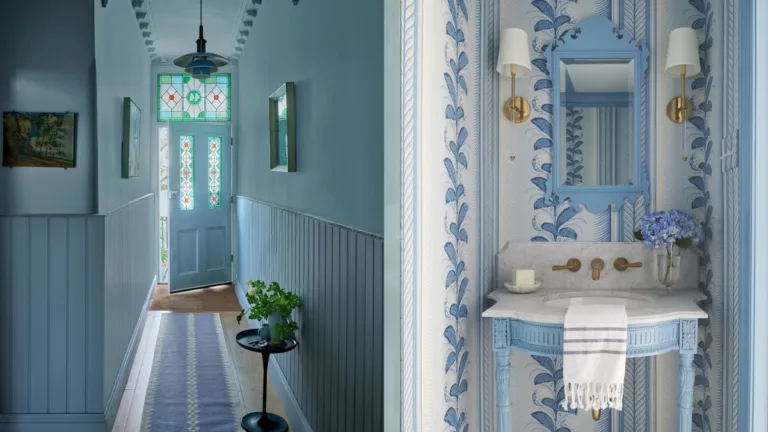
Origins and Evolution of the Technique
Pattern drenching takes inspiration from classic maximalist interiors of the 1970s, as well as from global influences like Moroccan tiling or Japanese wallpaper layering. With the resurgence of bold interior design trends, the technique has evolved with modern materials and digital printing, making it easier to apply on multiple surfaces with precision.
How Pattern Drenching Works
The Key Elements Involved
To successfully implement pattern drenching in interior design, there are key components to consider:
- Pattern Choice: From florals and geometrics to abstract prints
- Surface Selection: Walls, ceilings, curtains, furniture, flooring
- Color Palette: Complementary or monochromatic, depending on desired impact
- Scale: Small repeating patterns create calm; large patterns make bold statements
Materials and Surfaces You Can Use
Pattern drenching can be applied using:
- Wallpaper: The most common medium, especially peel-and-stick options
- Paint Stencils: A DIY-friendly and budget-conscious option
- Textiles: Patterned upholstery, drapes, cushions, and rugs
- Tiles: For kitchens, bathrooms, and even statement floors
- Custom Laminates & Vinyls: For furniture or cabinetry facades
Patterns Commonly Used in the Drenching Process
Depending on your style, you can explore:
- Floral motifs for romantic or vintage spaces
- Art Deco geometrics for glam or luxury vibes
- Abstract and brushstroke prints for modern styling
- Ethnic or tribal prints for global or bohemian interiors
- Stripes or chevrons for classic appeal
Benefits of this Drenching
Creates a Bold and Immersive Look
This technique turns a plain space into a visually engaging experience. It immerses the viewer in a cohesive atmosphere where every element feels intentional.
Adds Personality and Drama to Any Space
Whether you’re aiming for playful, dramatic, or sophisticated, the right pattern can completely alter a room’s mood and identity.
Great for Small or Monochrome Spaces
Oddly enough, pattern drenched walls can make small rooms feel more expansive when the pattern flows seamlessly across all surfaces. It minimizes visual breaks and clutter.
Enhances Theme-Based Interior Styles
Pattern drenching supports thematic interiors. For example:
- Tropical prints for resort-style rooms
- Monograms for classical libraries
- Watercolor motifs for soft, romantic bedrooms
Where to Use it in Your Home
Living Room Statement Walls
Drench an entire wall with a bold pattern and extend it to throw pillows or window curtains. It anchors the room and acts as a conversation piece.
Powder Rooms and Bathrooms
These small spaces are perfect for experimentation. A pattern on the walls and ceiling can make the room feel boutique-like.
Bedrooms with Repetitive Motifs
Use one repeating pattern on your bed linens, headboard upholstery, and behind-the-bed wallpaper to create a serene or striking sanctuary.
Entryways and Hallways
Often overlooked, these spaces can benefit from a graphic or artistic approach, offering a memorable first impression.
Accent Ceilings and Custom Furniture
Don’t limit patterns to walls. Pattern drenched ceilings, also known as the fifth wall, or cabinetry wrapped in pattern-printed vinyl add surprise and sophistication.
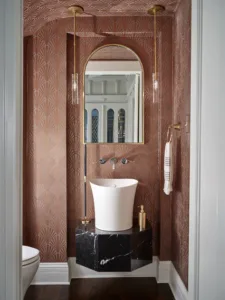
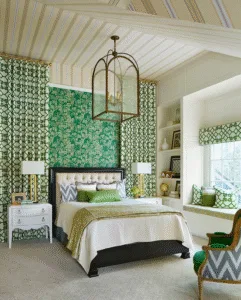
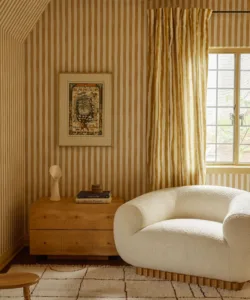
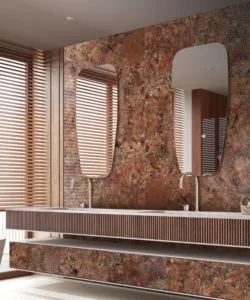
Tips for Successfully Implementing Pattern Drenching
Choose the Right Pattern and Scale
Select a pattern that fits your space. Busy, tiny prints might overwhelm large rooms, while bold, oversized motifs can crowd smaller spaces.
Balance with Neutral Accessories
So the room doesn’t feel too intense, use plain or neutral-colored furniture and decor items to soften the look.
Limit to One or Two Spaces Per Home
Too much pattern can cause visual fatigue. Use this technique strategically to highlight focal areas.
Consider Lighting and Room Size
Bright rooms can handle bolder patterns. In dimmer spaces, choose lighter or more open motifs to avoid creating a cave-like feel.
Common Mistakes to Avoid
Overloading the Space with Too Many Elements
Mixing different prints, textures, and colors in one space can feel chaotic rather than creative.
Ignoring Pattern-Color Harmony
A pattern may be beautiful but clash with existing furniture colors or flooring. Always test samples in your space first.
Skipping Professional Guidance for Complex Designs
If you’re pattern drenching across various surfaces and levels, a designer or skilled installer can help execute the vision smoothly and avoid misalignment.
Pattern Drenching vs Other Interior Trends
Pattern Drenching vs Maximalism
While both embrace bold design, maximalism often involves mixing multiple styles, patterns, and colors. Pattern drenching focuses on one unified pattern repeated in a curated, cohesive way.
Pattern Drenching vs Wallpaper Accent Walls
An accent wall isolates the pattern to one surface, while pattern drenching wraps the entire room in it, offering a more immersive experience.
Pattern Drenching vs Monochrome Styling
Monochrome styling uses a single color tone throughout, focusing on color harmony. Pattern drenching centers around visual rhythm, using repeated motifs instead of hues.
Expert Advice: When to Go Bold with Patterns
Interior Designers’ Take on Pattern Drenching
Most interior designers recommend pattern drenching for clients who want something bold, artistic, and personal. It’s especially popular in homes with a creative energy or statement-driven style.
Ideal Homes and Client Profiles for This Trend
Pattern drenching is perfect for:
- Homeowners who are design-forward and expressive
- Boutique Airbnb or rental units seeking a standout interior
- Urban homes and apartments where visual space needs expansion
Conclusion
Is Pattern Drenching Right for Your Space?
If you’re bored of blank walls and uninspired spaces, pattern drenching in interior design could be the creative push you need. It allows you to reflect your taste in a bold yet refined way.
Embracing Pattern with Confidence
This trend isn’t for the faint-hearted—but when executed well, it elevates a space to designer-level sophistication. With thoughtful planning and pattern selection, you can achieve a stylish, cohesive look that is equal parts art and function.
Frequently Asked Questions
Q. What exactly is pattern drenching, and how is it different from using wallpaper or accent walls?
A. Pattern drenching means applying the same pattern on multiple surfaces like walls, ceilings, or furniture to create a complete and unified look. Unlike a single wallpapered wall, it wraps the space with a consistent motif for dramatic effect.
Q. Will pattern drenching make my room feel smaller or too busy?
A. It depends on the pattern and color. Subtle or light-toned patterns can actually make a space feel larger. Busy or dark patterns in a small room can feel overwhelming if not balanced with neutrals.
Q. Is pattern drenching only suitable for modern or luxury homes?
A. Not at all. It can be used in boho, vintage, eclectic, or even rustic interiors. The key is choosing a pattern that fits your style.
Q. Can I use different patterns for walls, furniture, and décor in the same room?
A. For true pattern drenching, stick to one main pattern across all elements. Mixing different patterns is more aligned with maximalism than pattern drenching.
Q. What materials work best for pattern drenching?
A. Wallpaper, tile, fabric, paint stencils, and printed vinyls are popular choices. Each one works for different surfaces like walls, upholstery, or cabinetry.
Q. Is pattern drenching a long-term trend or just a passing fad?
A. It may be trendy now, but with timeless patterns and smart styling, it can remain fashionable and stylish for years to come.